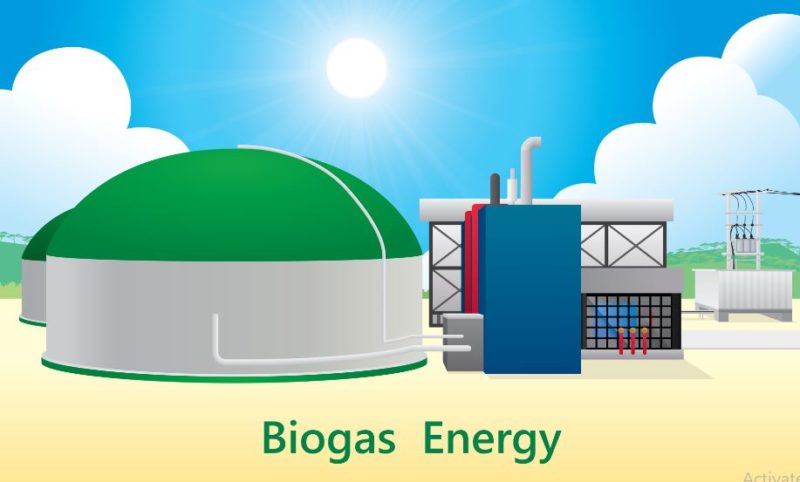India Has An Excellent Opportunity To Leapfrog Gas Use
 5000 plants by 2025
5000 plants by 2025
The IEEFA’s recent report on “Impact of LNG Price Volatility on Gas Demand in India” focused on the extreme volatility of the gas prices which reached unprecedented lows in 2020 and all-time highs in 2021. The author of the report was Purva Jain, Analyst and Guest Contributor, IEEFA. Jain spoke to us about why India must make the switch to biogas and biomethane now. Jain advocates switching to other non-fossil fuels for cooking, mobility and industries and also exploring the possibility of higher use of electricity instead.
Q.1 The recent report from IEEFA suggesting a switch to biogas and methane fuelled economy has come at a good time as India faces volatile LNG prices. What are some of the key highlights of the IEEFA report?

Purva Jain- The IEEFA report talks about the increasing volatility in LNG prices which is adversely impacting gas consuming sectors in India. The report highlights the price fluctuations in LNG price from US$2/MMBtu to US$35/MMBtu in a span of one and a half year. This sort of price volatility has major implications for demand, capital and infrastructure, especially in price-sensitive emerging economies such as India – raising the operating costs of downstream projects in the industrial, power and CGD sectors, harming product competitiveness, utilisation rates and returns on investment. So, while the consumer switches back to dirty fuels with price increase and perhaps would be willing to switch back to gas if price falls under the US$10/MMBtu threshold, the infrastructure readiness is terribly impacted by the volatility.
The report also notes that while LNG prices have been volatile for a while and the price forecasts also vary by large degrees on a monthly basis, the price of gas is expected to remain higher than US$25/MMBtu for the next one year. This means that the gas infrastructure runs the risk of being stranded and investing billion dollars in an import dependent volatile fossil fuel is not a wise strategy. Even more so as the domestic gas prices are not insulated from global price increases. The October, 2021 bi-annual price revision saw over 60% increase in well-head gas prices which are expected to double in the upcoming April, 2022 price revision due to the high gas prices in 2021. The report advocates switching to other non-fossil fuels for cooking, mobility and industries and also exploring the possibility of higher use of electricity instead.
Q. Is this an opportunity India shouldn’t miss? What are some of the biggest challenges India faces in transitioning to alternatives like biogas and biomethane?
Purva Jain- Most definitely. With very limited dependence on gas in the energy mix compared to many global economies, India has an excellent opportunity to leapfrog gas use and jump to use of cleaner fuels on a larger scale. India has onboarded renewable energy at an unmatchable pace which has resulted in RE becoming viable for large scale commercial use. Similar opportunities lie in the use of alternatives such as biogas and biomethane especially with global capital increasingly getting into renewable energy.
There are of course challenges in transition to these alternatives. The high upfront cost of setting up biogas plants, the poor segregation of waste and in turn a weak supply chain, and infrastructure weakness for use of such alternatives that pose a challenge. But these are similar to any other big infrastructure transition and can be overcome with the right strategy and policy.
Q. Can you share the benefits India stands to gain if it becomes an early adopter of methane and biogas?
Purva Jain- Non-fossil fuel alternatives to LNG, such as biogas for transport and biomethane for industrial use, would not only be more affordable but also help India transition to a low-carbon economy. Biogas and biomethane, options approved by the U.S. Renewable Fuel Standard program, are equivalent in quality to piped natural gas for transport and industrial use respectively.
Compressed Biogas (CBG) plants are being set up in Punjab and Haryana, to use paddy stubble – which is otherwise burned at the onset of winter and results in massive air pollution. There are plans to build 5000 such plants by 2023 with an investment of Rs1.75 lakh crore (US$23.2 billion). These are expected not only to result in 75,000 jobs but also to reduce India’s CNG bill by 40%. To combat in part the increasing volatility in gas prices, the government should incentivise construction of CBG plants, increase the number of projects and hasten their operation. Investing in alternatives to natural gas to insulate India from energy security and balance of payments risks and from the fuel’s inflationary pressure – and, most importantly, to meet low-carbon goal.
Q. What is the potential and scope of these non-fossil fuels in India? How critical is the switch to help India meet its climate goals set at the Glasgow summit?
Purva Jain- Implementing non-fossil alternatives will also help further India’s ambitious climate goals of the Glasgow Summit of achieving 500 GW of energy from renewable sources. MNRE notes that there is about 42 GW of energy potential from agriculture residue and bagasse based cogeneration with adoption of right technology. These could lead to massive savings in electricity cost, generate employment and lower fossil dependence. As per numbers available on MNRE’s website, there is a saving of Rs78.7 million with just 163 biogas plants.
Q. What are the infrastructure requirements for switching to biogas and methane economy?
Purva Jain- There is at present a need for infrastructure addition for making biogas and methane more widely used. There is not only a requirement to increase biogas plants but also invest in distribution infrastructure and upgradation of existing industrial and transport segments to be suitable for use of these non-fossil alternatives. The IEA estimates that in a scenario if all SDG goals are met there will be doubling of biomethane consumption in transport by 2040 with India accounting for the largest share of alternative fuel vehicles.
Q. Is the government policy supportive in this regard? What are the policy gaps?
Purva Jain- There are various government policies in support for biogas and biomethane economy. One such scheme is the Sustainable Alternative Towards Affordable Transportation (SATAT) scheme for setting up 5,000 CBGs has provisions for offtake and marketing of CBG by OMCs and assured long term pricing. It also calls for priority sector lending, central financial assistance of up to Rs 10 crore per project and marketing freedom to sell excess CBG to consumers other than OMCs. There is a need to focus more on research and development in the sector if India has to emerge as a leader and exporter of biogas. There is also a need to invest in monitoring and evaluation and quality control. Few large scale pilot projects would also prove to be beneficial.
Q. What is the current share of LNG use in India’s gas demand? What are some of the recommendations from your side to reduce it and to make the switch smooth?
Purva Jain- At present there is about 50% dependence of LNG in the India’s gas sector which will have to go up to as high 70% if target of 15% gas in energy mix is to be met. Increasingly fulfilling the gas needs of the country with imports – a sector with highly uncertain dynamics — puts both affordability and energy security in question. There has been a recent uptake in domestic gas production and that gas should be utilised for sectors such as fertiliser or power where viable alternatives are not present or there are savings in carbon emissions. India should leapfrog new gas networks in favour of electricity for cooking and mobility and invest aggressively in new energy alternatives such as biogas and biomethane which are the fuels of the future.




